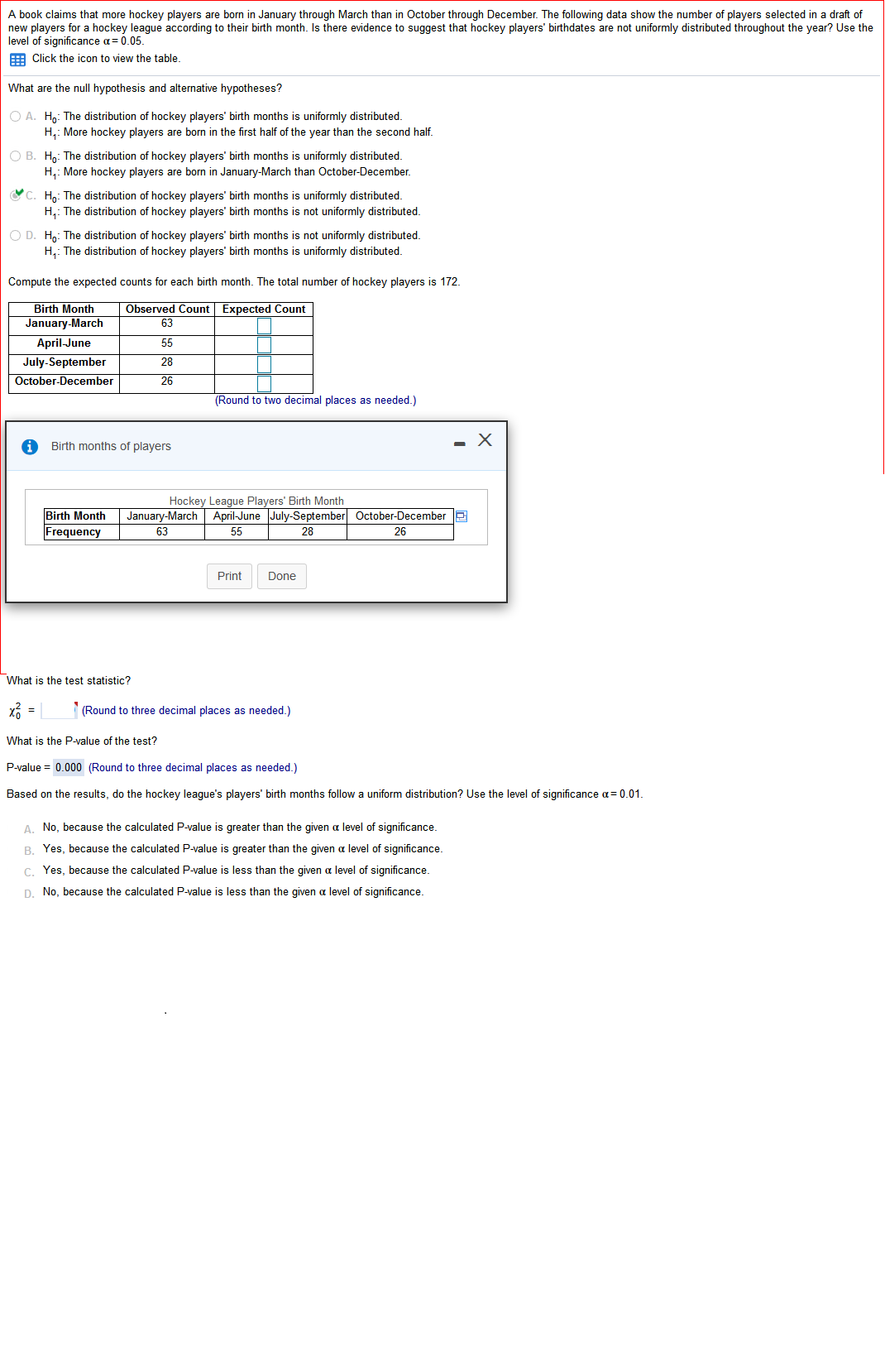Answered step by step
Verified Expert Solution
Question
1 Approved Answer
A book claims that more hockey players are born in January through March than in October through December. The following data show the number of
A book claims that more hockey players are born in January through March than in October through December. The following data show the number of players selected in a draft of new players for a hockey league according to their birth month. Is there evidence to suggest that hockey? players' birthdates are not uniformly distributed throughout the? year? Use the level of significance alpha equals 0.05.
LOADING...
Click the icon to view the table.
1

Step by Step Solution
There are 3 Steps involved in it
Step: 1

Get Instant Access to Expert-Tailored Solutions
See step-by-step solutions with expert insights and AI powered tools for academic success
Step: 2

Step: 3

Ace Your Homework with AI
Get the answers you need in no time with our AI-driven, step-by-step assistance
Get Started


